SetonixSynth Marsupial Handleiding
SetonixSynth
Niet gecategoriseerd
Marsupial
Bekijk gratis de handleiding van SetonixSynth Marsupial (3 pagina’s), behorend tot de categorie Niet gecategoriseerd. Deze gids werd als nuttig beoordeeld door 284 mensen en kreeg gemiddeld 4.9 sterren uit 142.5 reviews. Heb je een vraag over SetonixSynth Marsupial of wil je andere gebruikers van dit product iets vragen? Stel een vraag
Pagina 1/3

Marsupial Dual Voltage-Controlled Filter User’s Manual
Copyright 2021 SetonixSynth. All rights reserved.
Updated 03/25/2022

Technical Specifications (Eurorack)
Width: 8hp
Depth: 25mm
Current Draw: 36mA @ +12V; 35mA @ -12V
Hello and thank you for using the Marsupial Dual Voltage-Controlled Filter for Eurorack. We hope you will
find its tones most pleasing!
1. Connecting your Marsupial
Use a typical 10-16-pin Eurorack ribbon power cable to connect the rear header of your Marsupial module
to your Eurorack case's power bus. The -12V (red stripe) side of the ribbon cable must be aligned with the
white silkscreen indicator stripe for proper use. This module is reverse diode protected, but it is still not
recommended that you plug it in backwards to see what happens.
2. Theory of Operation
The Marsupial began life as a smaller filter meant primarily for Stereo use, with an IC at its core (the
AS3350 Dual Filter chip) geared toward this use. As such, it is a very effective Stereo filter over the entire
frequency range in Parallel mode with the B Offset knob set in the center, useful for processing stereo
sounds through simple manipulation of the Global Cutoff and Resonance controls and patching of CV into
Filter A’s controls with nothing patched to Filter B, thus creating normalized control of both filters.
However, upon testing various early prototypes it became apparent that the Marsupial’s true sonic power
and much of its most interesting behavior comes from interaction between the two filters, and to this end
the module’s relatively simple controls are designed to establish interesting relationships between the
cutoff frequency of each. Simple offset of Filter B is a powerful tool to create timbral “movement” by
controlling the sharpness to which harmonics are removed at each of the two filters’ cutoff frequencies,
and then the attenuverters on each CV Input can be used to play with the space between each cutoff.
Interesting and otherworldly sounds can come from overlapping the two filters using nothing more than a
simple envelope or LFO for modulation.
Once the relationship between the two filters has been established via the Offset knob and CV inputs, the
whole configuration can be shifted across the whole frequency spectrum using the Global Cutoff knob, or
1V/Octave Input A with nothing patched into 1V/Octave Input B. This creates easily-controllable complex
filter sounds, especially once multiple outputs are mixed together.
Both filters in the Marsupial contain an enhanced Resonance circuit which allow the filter’s tone to go
from subtle tone-shaping, to powerful sympathetic resonance, to a clean sine-wave which tracks
1V/Octave signal well over approximately 5 octaves when self-resonating. Self-resonance will mix with
any audio input.
3. Summary of Functions
Audio goes into the Marsupial via the two jacks labeled “A-Audio In-B”. If audio is patched to the A input, it
will be normalized to the B input. Each audio input is routed to a discrete single-supply JFET buffer
pre-filter. The buffers will introduce a subtle saturation/clipping sound to the audio inputs once the signal
level reaches approx. 8Vp-p, providing some nice added harmonic material for the filters when driven. If a

clean sound is desired, simply turn the input level down using a passive attenuator; a higher Resonance
setting will reduce the filter’s amplitude somewhat as well.
The outputs of each buffer are routed to the Marsupial’s two separate filters, referred to on the panel as
“A” and “B”. Each Filter has an Control Voltage input with attenuverter, unattenuated 1V/Oct control input,
and Bandpass and Lowpass outputs. The Global Cutoff and Resonance knobs provide master control
over the cutoff and resonance of both filters respectively, while the B Offset knob positions Filter B’s cutoff
relative to that of Filter A, providing an offset of approximately 2.5 Octaves on either side of center. The
LEDs labeled “A” and B” are purely cosmetic and indicate substantial audio output from the Lowpass
output of the corresponding filter.
Arrows on the panel between each input indicate normalization from Filter A to Filter B, with any signal
inserted into a Filter A input automatically being routed to the corresponding input on Filter B unless the
normalization is broken by the insertion of a separate Audio or Control Voltage signal for Filter B.
As an added performance feature, the Series/Parallel switch changes the input of Filter B between its
Audio Input jack and the output of Filter A. The Filter A output routed to the Series/Parallel switch is
selected via the rear 3-pin header. (For maximum available bandwidth, we recommend using the
Lowpass output, and ship our units in this configuration by default.)
4. Patch Ideas
"Simple Stereo"
Set “B Offset” to 12 O’Clock and set the switch to Parallel. Patch the Left component of a stereo sound to
Input A, and the Right component to Input B. The Marsupial will now operate as a resonant stereo filter
with Lowpass and Bandpass outputs.
“Pinged Voice”
Patch a trigger input into Audio Input A and set switch to Series. Adjust the resonance so that it produces
a “tail” with decay on a Filter A’s LP output, then patch a CV such as envelope or LFO to Filter B’s CV
input. Adjust B Offset and the CV B attenuator to filter and create sympathetic resonance of the pinged
Filter A. (Bonus: patch an LFO or VCO input into Filter A CV input to FM your pinged voice. Sounds
great!)
“Intelligent Filtering”
Patch a mono audio input to Input A, set switch to Series, and take audio from Filter B’s Lowpass or
Bandpass outputs. Set B Offset towards the CW side and patch an envelope into the CV A input. Set the
CV A attenuator to the positive side and set the CV B attenuator correspondingly negative, with nothing
patched into this input. This will simultaneously “open” Filter A and “close” Filter B, creating interesting
timbres as the distance between each filter cutoff changes.
“Complex Oscillator?!”
Set switch to Parallel and Resonance to Full CW. Patch LP A output to CV In B and LP B output to CV In
A. Adjust attenuators and B Offset to create cross-modulation between the two filters, then control the
“oscillator” with the Global Cutoff knob and 1V/Oct A input.
These are but four patch ideas, and a thorough exploration of the Marsupial can surely yield many more.
Product specificaties
| Merk: | SetonixSynth |
| Categorie: | Niet gecategoriseerd |
| Model: | Marsupial |
Heb je hulp nodig?
Als je hulp nodig hebt met SetonixSynth Marsupial stel dan hieronder een vraag en andere gebruikers zullen je antwoorden
Handleiding Niet gecategoriseerd SetonixSynth

3 Maart 2025

3 Maart 2025

3 Maart 2025

8 Juli 2023

5 Juli 2023

4 Juli 2023

2 Juli 2023

30 Juni 2023

25 Juni 2023

24 Juni 2023
Handleiding Niet gecategoriseerd
- Alfresco
- Mr Steam
- Daffodil
- AccuTemp
- Schoeps
- IKEA
- Seco-Larm
- Sideclick
- StarIink
- Midland
- Inkbird
- DuroStar
- Gaggia
- Weber
- Cadco
Nieuwste handleidingen voor Niet gecategoriseerd
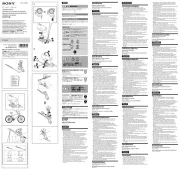
16 September 2025

16 September 2025

16 September 2025
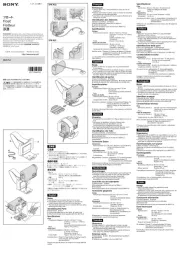
16 September 2025

16 September 2025
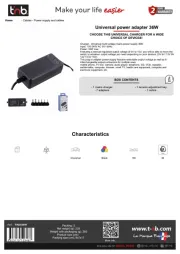
16 September 2025

16 September 2025
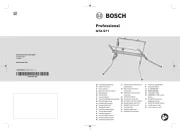
16 September 2025
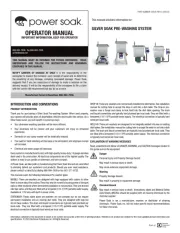
16 September 2025

16 September 2025